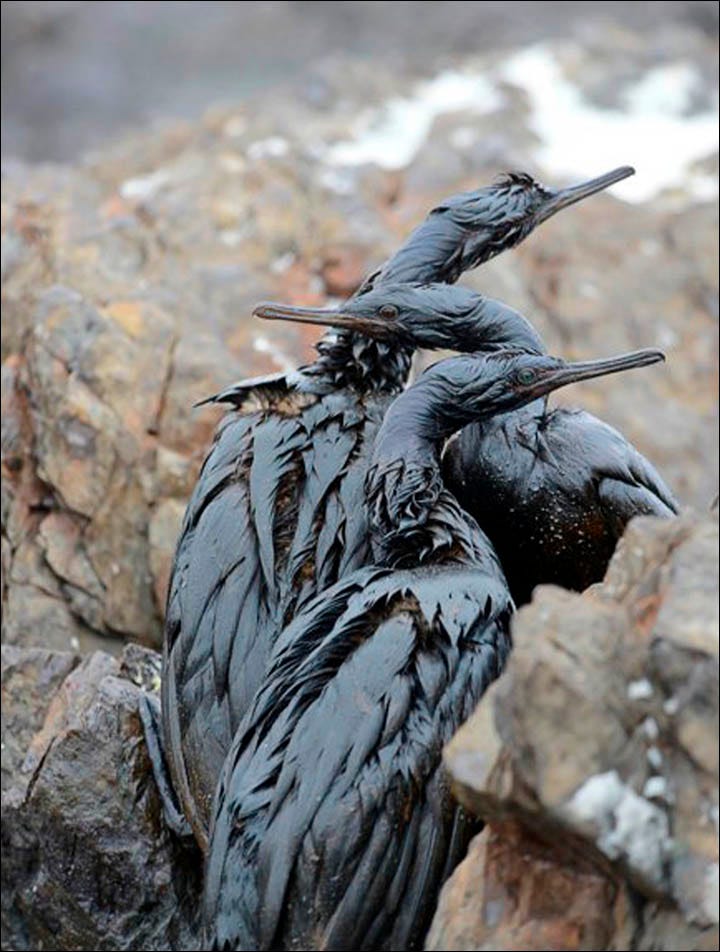It is likely the technique of cormorant fishing, a twilight activity —like any hunt— was imported to Southern China from Japan under the Tang Dynasty. The main bird committed to this manner of fishing in and around the River Li is Phalacrocorax carbo, “carbon black”, equipped with a choking ring around its neck so that it cannot swallow its catch; only deliver it. Spoils are then divided between crewmen and birds.
This piece is not, alas, about the carbon black cormorant. It is about the oil black one, the “tar-bodied bird” I mentioned in my last dispatch on depression. The first is a great dewetter, its feathers designed by surface and structure to stay dry despite portentous dives. An insulating layer of air, provided by these hydrophobic feathers, ensures that water never touches the cormorant’s skin.
Oil is different. It will soak through the feathers through and through, and they will stay wet unless the bird is put through an excruciating cleaning process that is often unsuccessful despite all best efforts. The oilspill will take the shape of the bird, corrupting the native iridescence of its plumage by turning it into a bituminous enamel. There is now something darkly bejeweled about the cormorant’s appearance, something oven-baked. The black will have gone up its nostrils and into its lungs. Its sclera will be, and cut, like obsidian. The sheen of its feathers at the point of death will only be comparable to that of certain, healthy foliage, but greasier. It will split into sections like poorly parted hair, to show brown spots of mostly irretrievable promise. Their beaks will drip in the shape of that common nightmare of dissolving teeth.
To save one of these contaminated birds you will lose hundreds or thousands or tens of thousands of them. The expenditure is hardly worth it, unless perhaps a similar logic extends to them as does to us: If you can find one good man in Sodom, and so forth. And the man is sought for, and not found, as the cormorants become not something you can salt the earth with, but barely living fossil fuel.
This technique of cormorant fishing, a twilight activity —like any hunt— puts a ring around the bird’s neck so that it cannot swallow or even deliver its catch; only choke. The crew, perhaps under the influence of alcohol, will at some point grow bored or tired, drag it onto the boat by the leash, and beat it to death until there is nothing but surface and structure —its featherprint— left.
Photo from “Rescuers seek to save Pelagic cormorants covered in oil from tanker spill”. The Siberian Times. Olga Gertcyk. December 3, 2015.




